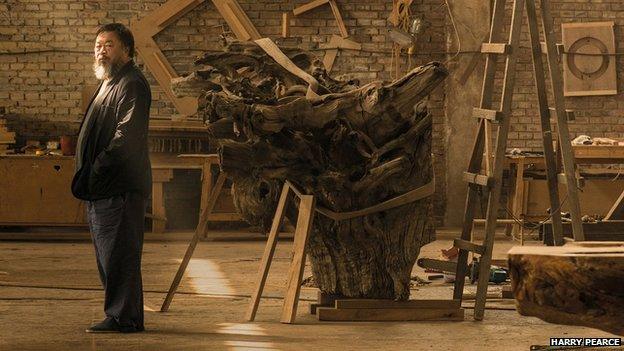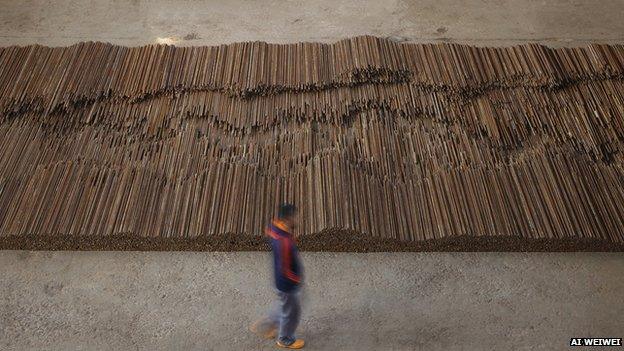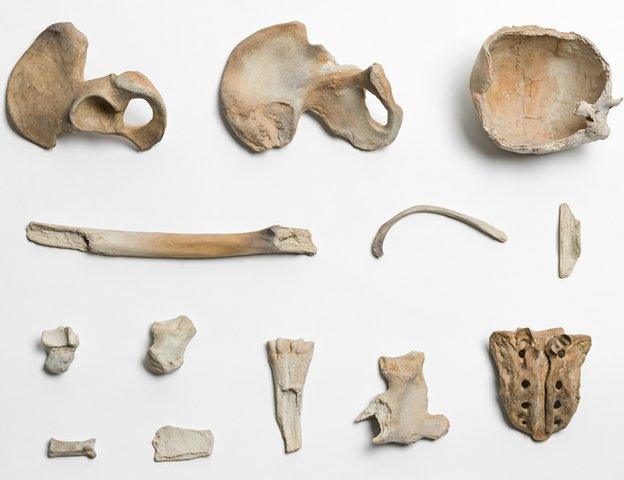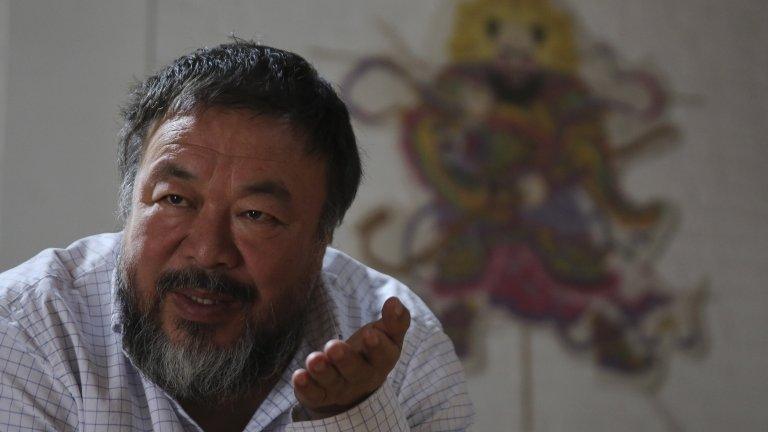Ai Weiwei show at Royal Academy to house heaviest sculpture
- Published

Ai Weiwei in his studio in Caochangdi, Beijing, taken in April 2015
A monumental work by Chinese dissident artist Ai Weiwei will be the heaviest sculpture ever shown at the Royal Academy of Arts.
The 90-tonne installation, entitled Straight, is made from steel rods from buildings damaged in the 2008 Sichuan earthquake.
It forms part of a major retrospective of Ai's work opening at the Academy in London in September.
The show is being mounted in Ai's absence, since he cannot leave China.
Following the Sichuan quake, Ai collected some 200 tonnes of twisted steel rods destined for recycling. They were straightened by hand in his studio in Beijing and returned to the form they would have been in before they were bent by the earthquake.
The resulting artwork is described by the RA as "a sober monument to the victims of the earthquake".

Straight (2008–12) is made from steel rods from buildings damaged in an earthquake
In a statement, Ai said he was "honoured" to have the chance to exhibit at the Royal Academy.
"I'm very happy to be a part of it. This exhibition is my first major survey in London, a city I greatly admire. The selected artworks reflect my practice in recent years, and also include new works made specifically for this show."
Among those new pieces is Remains (2015) - a porcelain work that replicates a group of bones excavated at the site of a labour camp that operated under Communist leader Mao Zedong in the 1950s.
Adrian Locke, co-curator of the exhibition said: "Working with Ai Weiwei has presented us with new challenges but his ability to comprehend space, even without having experienced it first-hand, and the clarity of his vision for the use of that space in relation to his work has been revelatory."

Remains, 2015
The RA said exhibition was developed in close collaboration with Ai, who "virtually navigated the spaces" from his studio in Beijing.
Ai used a similar method when he helped but together an exhibition of his work at Blenheim Palace last year.
The artist has not been able to leave China since his passport was confiscated four years ago.
An outspoken critic of the Chinese government, Ai was detained for almost three months without charge in 2011. After he was released, he was accused of tax evasion and fined 15m yuan ($2.4m, £1.5m).
As part of his bail conditions, the Chinese authorities imposed a foreign travel ban on the artist.
Ai Weiwei at the Royal Academy runs from 19 September - 13 December 2015.
- Published26 September 2014

- Published20 July 2012